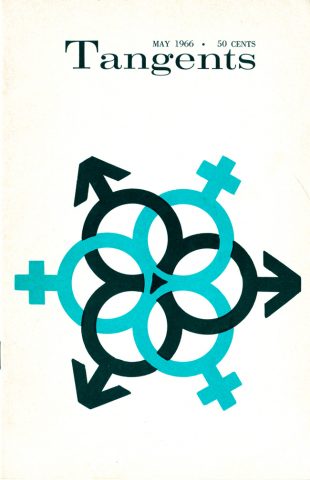 Protest on Wheels
Protest on Wheels
by Don Slater
Tangents
Vol. 1 No. 8 • May 1966
“Oi veh!” burst forth a tiny woman, clutching herself in disbelief at the corner of Wilshire Boulevard and Fairfax Avenue.
“This we don’t need. My son is already a homosexual.”
Angeltown pedestrians and motorists, who, up to that moment were convinced they had “seen everything,” were witnessing their first gay motorcade. Sponsored by the Los Angeles Committee to Fight Exclusion of Homosexuals From the Aimed Forces, the caravan of cars had just swung into the heart of Los Angeles’ Jewish community, and, with two-thirds of the over-long itinerary completed and with only the Hollywood District to go, riders and drivers in the motorcade were beginning to welcome the prospect of completing the adventure without incident.
 Ever since March 8th, the Committee, headquartered in Tangents’ office, had met twice a week in frenzied preparation of its Armed Forces Day Protest. “The idea had to wait 18 years,” said Henry [Harry] Hay, Committee Chairman and father of the homophile movement in the U.S.
Ever since March 8th, the Committee, headquartered in Tangents’ office, had met twice a week in frenzied preparation of its Armed Forces Day Protest. “The idea had to wait 18 years,” said Henry [Harry] Hay, Committee Chairman and father of the homophile movement in the U.S.
“I can honestly say that I did not expect to see such a public demonstration on behalf of homosexuals in my lifetime.”
Hay had a point, as every homophile leader knew. 18 years before there had been only one homophile organization in the country — that was the Mattachine Foundation headed by Hay himself.
Over the years homosexuals had been slow to organize. They had been wary of cooperating with self-appointed leaders in finding solutions to the many social, legal and psychological problems they faced. The majority neither saw themselves as a part of a minority, nor recognized in their number an identifiable class. And though the years had brought 14 organizations scattered throughout the country, there was little national unity among them.
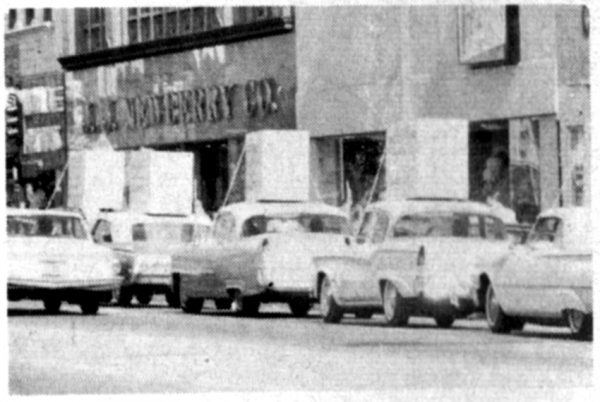 Even on the draft question, concerning which all organizations had been expected to agree, “The ‘coordination’ of the May 21 demonstrations was most notable by its absence,” said, Janus President Clark Polak pessimistically. “The Kansas City meeting seems to have accomplished little.”
Even on the draft question, concerning which all organizations had been expected to agree, “The ‘coordination’ of the May 21 demonstrations was most notable by its absence,” said, Janus President Clark Polak pessimistically. “The Kansas City meeting seems to have accomplished little.”
He was referring to the National Planning Conference of Homophile Organizations [NACHO] held February 19–20 out of which had grown the idea for the national campaign to end exclusion of homosexuals from the Armed Forces. The basis for the protest was simply that the exclusion of homosexual men and women from military service because of their homosexuality and for no other reason was unfair. Public attention had to be called to the Defense Department’s stand that, “The homosexual is considered unsuitable for military service and is not permitted to serve in the Armed Forces in any capacity.”
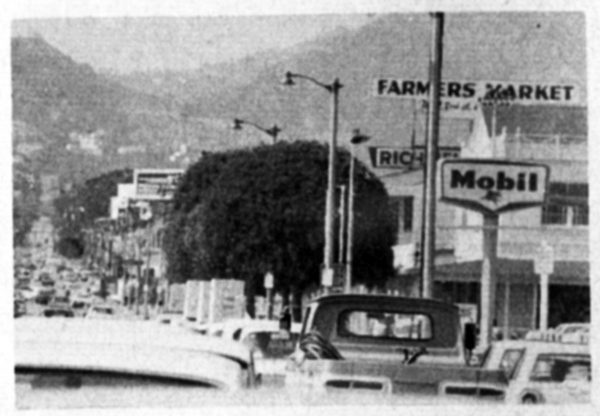 After initial plans were exchanged by Committees organized in Kansas City, Los Angeles, New York, Philadelphia, Sacramento, San Francisco, and Washington, D.C., communication concerning National Protest Day all but stopped and, in some areas of the country, outright opposition to the program was voiced.
After initial plans were exchanged by Committees organized in Kansas City, Los Angeles, New York, Philadelphia, Sacramento, San Francisco, and Washington, D.C., communication concerning National Protest Day all but stopped and, in some areas of the country, outright opposition to the program was voiced.
However, despite the lack of unity, Tangents’ delegates to Kansas City returned to Los Angeles and called a local meeting of homophile groups and interested individuals, chose the self-explanatory name for the Committee, issued a press release the last of March, and got things rapidly shaped up.
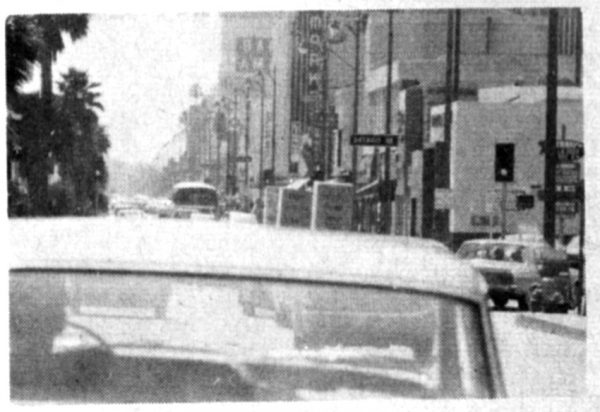 Amid the chaos at Tangents’ office the preparations were often loud and agitated. With May 21 less than two months away, the details of the motorcade itinerary, the number of cars and riders, the slogans, necessary permits, publicity, information leaflets, etc., etc., had to be dealt with by a staff composed entirely of volunteers.
Amid the chaos at Tangents’ office the preparations were often loud and agitated. With May 21 less than two months away, the details of the motorcade itinerary, the number of cars and riders, the slogans, necessary permits, publicity, information leaflets, etc., etc., had to be dealt with by a staff composed entirely of volunteers.
Almost immediately the newspapers, radio and television news departments picked up the idea of the motorcade, and the campaign was off to a well-publicized start. The other cities got going with plans for rallies and public meetings. As Hay and his staff carried on their interviews with news reporters, the Los Angeles Police Department, realizing that the event was actually going to take place, and already beset by Watts uprisings, could only foresee further difficulty in a homosexual motorcade through the streets of the city.
“If you want to go into military service, why don’t you just sign up?” Sgt. Wesley Sherman of Police Department Special Events asked Don Slater. “Why create an incident?”
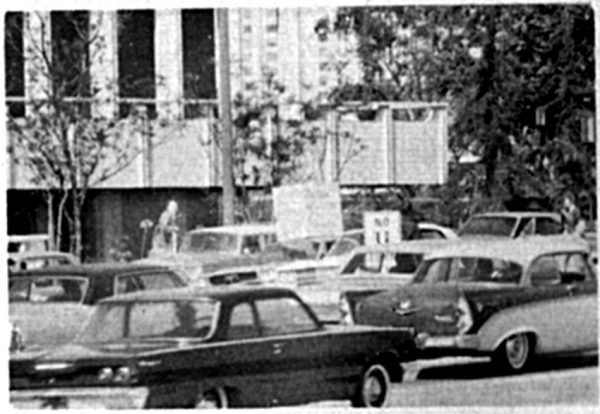 But a desire to go into the service was not the question. Don Slater and most other Committee members had already served and had been honorably discharged. “Who wants to be drafted?” Slater asked Newsweek reporter Phil Hagen. “Surely not the homosexual. But the government’s categoric rejection of all persons it knows to be homosexual is un-American and based on ignorance and superstition. Homosexuals are asking for equal rights and benefits from their country. At the same time they recognize their equal duties and responsibilities.”
But a desire to go into the service was not the question. Don Slater and most other Committee members had already served and had been honorably discharged. “Who wants to be drafted?” Slater asked Newsweek reporter Phil Hagen. “Surely not the homosexual. But the government’s categoric rejection of all persons it knows to be homosexual is un-American and based on ignorance and superstition. Homosexuals are asking for equal rights and benefits from their country. At the same time they recognize their equal duties and responsibilities.”
From May 1st on the Committee began to saturate the Los Angeles gay bar crowd with leaflets concerning the issues involved in the campaign. Printed maps of the motorcade itinerary were included. Almost nightly from Topanga Canyon on the North to Long Beach on the South, teams of workers placed folders under windshield wipers of cars parked in the, vicinity of bars known to cater to the gay crowd asking for financial or any other support.
No response.
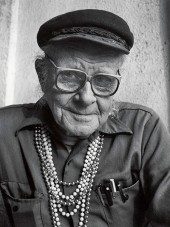
From May 17th on, Committee members hardly slept at all. 60 individual signs had to be lettered with slogans. A trial run of the route had to be double-checked. Confirmation of drivers and riders had to be made. Attorneys who had agreed to be “on call” had to be verified.
By Friday night everyone was a little on edge. Time photographers were all over the place. “We’re all tired from the work,” said Hay, “but if this comes, off, it will be something our city has never seen before. If it comes off. Imagine a motorcade of 15 cars and about a 20 mile route through Los Angeles. Ideally we should have had the support of the entire homophile, community; then we could have staged a really grand demonstration. But most homosexuals are still hiding.”
He continued vehemently: “With the work we have put into this thing and with the thousands of homosexuals in the area, it is fantastic to realize we will be lucky to have 40 persons show up for the motorcade tomorrow —and at least 20 who do will not be gay.”
Saturday morning began with a slight drizzle. The motorcade was scheduled to start at 2 o’clock. Everyone had agreed to meet at Tangents’ office at 12:30. The four-sided signs had to be attached to the cars. Many of the drivers and riders would be meeting each other for the first time. The Rev. Alex Smith of the First Methodist Church, L.A.; Carma Scott from the Prosperos; Professor Vern Bullough and his wife [Bonnie]; Rev. Philip Cain of the American Eastern Orthodox Church; and at least one actor continued along the route.
 Los Angeles newspapers, except for the Free Press, totally ignored the event itself. Asked if he would like to meet with persons who had just completed the first gay motorcade ever held, the City Editor of the Los Angeles Times replied, “Only if someone was hurt. All our reporters and cameras are in Watts.” As a small consolation Committee members did see themselves on CBS News at 6:00 and 11:00 that night.
Los Angeles newspapers, except for the Free Press, totally ignored the event itself. Asked if he would like to meet with persons who had just completed the first gay motorcade ever held, the City Editor of the Los Angeles Times replied, “Only if someone was hurt. All our reporters and cameras are in Watts.” As a small consolation Committee members did see themselves on CBS News at 6:00 and 11:00 that night.
The Washington Committee, sponsored by the Mattachine Society of Washington, D.C. successfully picketed the White House, and, then led by Dr. Franklin Kameny, past-president of the society, about 20 participants marched 4 miles from the White House to the Pentagon. Immediately following, Dr. Kameny flew to New York City to be the principal speaker at the DOB sponsored rally held that evening at the Central Plaza Annex.
In Philadelphia, a protest meeting was held by the Greater Delaware Valley Committee to Fight Exclusion of Homosexuals from the Armed Forces, sponsored by the Janus Society. Although poorly attended, Committee members had better success in handing out 10,000 protest leaflets to the general public at the Philadelphia Navy Yards. Said Janus President Clark Polak: “The public responded quite well. We had no untoward incident.”
 In San Francisco, a demonstration at the Federal Building Plaza was sponsored by the homophile organizations in the Bay Area. Participating in the demonstration were the Council on Religion and the Homosexual, Society for Individual Rights, Daughters of Bilitis, Mattachine Society, Citizens News, and The Tavern Guild of San Francisco. Some 20,000 leaflets were printed and made available for advance distribution. Picketing preceded the demonstration which was scheduled to begin at 2 o’clock. An estimated 40 to 50 persons paraded with signs. Some of the pickets carried honorable discharges.
In San Francisco, a demonstration at the Federal Building Plaza was sponsored by the homophile organizations in the Bay Area. Participating in the demonstration were the Council on Religion and the Homosexual, Society for Individual Rights, Daughters of Bilitis, Mattachine Society, Citizens News, and The Tavern Guild of San Francisco. Some 20,000 leaflets were printed and made available for advance distribution. Picketing preceded the demonstration which was scheduled to begin at 2 o’clock. An estimated 40 to 50 persons paraded with signs. Some of the pickets carried honorable discharges.
A total crowd of close to 500 witnessed the demonstration and heard the speakers from the various groups. “But,” reported Guy Strait of the Citizens News, “all speakers were our own. The public just watched. No one from the military or Selective Service showed up.” The Phoenix Society of Kansas City—the youngest of the homophile groups—confined its activities to an organizational type of meeting in which invited friends and members discussed the issues. The Phoenix group put out its own statement, and joined with the other Committees in arguing for an end to the military ban on homosexuals.
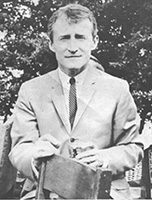
On the day after the first National Homophile Protest, Henry Hay discussed the military situation and the after-effects of the Los Angeles motorcade with Melvin Belli on his television show. He and Committee member John Burnside elaborated the whole question of the civil rights status of the homosexual in the U.S. later the same week on an hour-long Joe Pyne radio broadcast; and Tangents’ editor, Don Slater, was interviewed on the success of the demonstrations throughout the country on that same station on May 26th.
“The homophile movement has never had so much news coverage before,” said Hay after it was all over. “I only hope that if we do anything like this again reports will be a great deal more objective. We did not faze the government, and the public is either already on our side or disinterested.” It appeared certain that no matter what the Defense Department decides to do about the sex question on draft examinations, that the next demonstration on the part of the organized homophile movement will not wait another 18 years.
![]()

